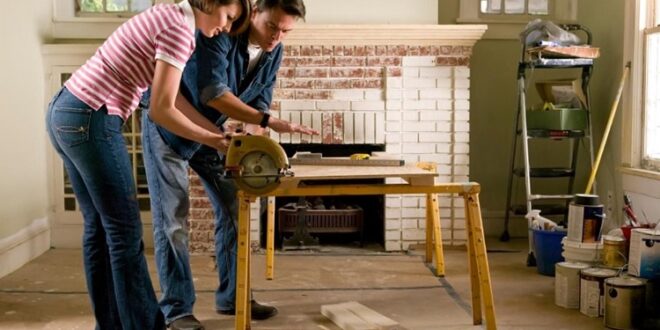It’s not always necessary to call a renovation company or craftsman to make your home improvements. Sometimes you can renovate your house yourself and save a lot of money in the process.
You will need to learn a few skills before starting and maybe even consult a professional to make sure you have everything you need. You need to invest in good quality equipment and power tools that you know how to use safely and efficiently. Remember, safety is paramount when it comes to DIY projects.
If you want to improve your DIY skills for an upcoming home renovation, here are the essential tools you will need.
You need a well-stocked toolbox to complete even minor renovations. You will need a hammer, screwdriver, nails, screws and pliers for most DIY jobs. Pliers can help you to hold wires and other materials in tight spaces that are hard to reach. You will also need a cutter and glue gun for some tasks.
In terms of power tools, you need to invest in quality over quantity. A cordless impact wrench will come in handy for DIY projects, especially for loosening any rusted nut and bolts. It has more torque than regular drills and can save you a lot of time and energy.
A jigsaw, circular saw and electric sander should also be included in your kit. Electrical appliances may seem like a considerable expense initially; however, they are essential for DIY renovations. Make sure to store your tools in a dry place up high, where pets and children can’t reach them. Always make sure cables are stored neatly, so you don’t run the risk of tripping on them and injuring yourself.
You will also need security equipment, such as masks, gloves, helmet, security shoes and safety goggles. Construction work comes with a lot of risks and a high chance of injury. Wear PPE to keep yourself and those on your DIY site safe.
If you are painting your home as well, you need to get your hands on some masking tape, tarps and, of course, your paint of choice. Apply your masking tape around the edges of your wall and any light switches or decorate wall pieces. The tape usually needs to come off between 15 and 30 days, so you have enough time to get everything done.
Use a paintbrush for the intricate details, like around the light switches and edges of the wall. If you are painting a statement wall, whereby one wall is different from the rest, use a paintbrush to make sure all the edges are as neat as possible. Use a large roller for the middle of the wall and a smaller roller for narrow spaces.
Invest in the right power tools and equipment to make your DIY project look like a professional job.
 HammBurg Be informed with latest news, reviews, entertainment, lifestyle tips, and much more.
HammBurg Be informed with latest news, reviews, entertainment, lifestyle tips, and much more.




